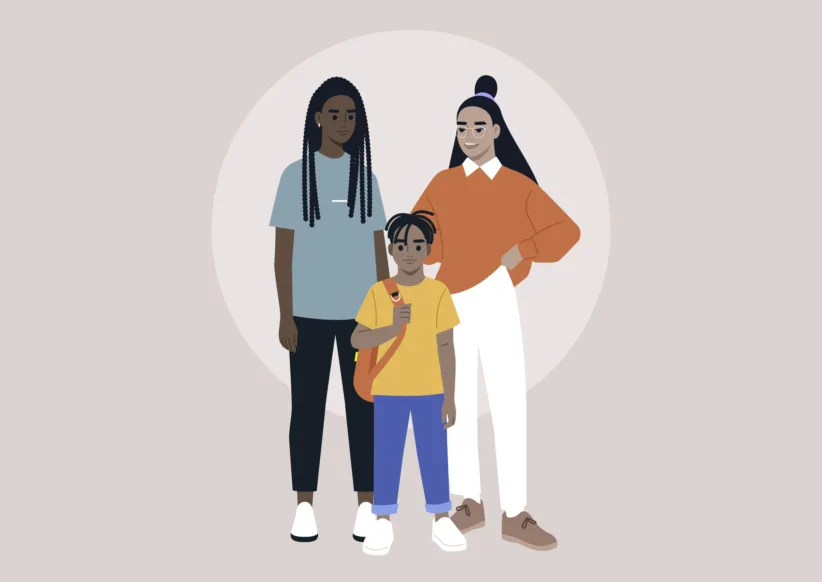He’s a jolly
panda with round black eyes, big furry ears and an infectious giggle. There’s
much to love about Little Pim—the popular cartoon bear that has been teaching
foreign languages via conversation skills to children ages six months to six
for the past three years.
Little Pim (littlepim.com)
is the cuddly creation of NYC mom Julia Pimsleur Levine, the daughter of the
mastermind behind the Pimsleur audio language learning method for adults. First
featured in foreign language-only DVDs, the adorable bear has now spawned a
series of flashcards, music CDs, online games and books for children.
This educational
ecosystem—at first glance a natural trajectory of a growing business—speaks to
the very backbone of the Little Pim philosophy. “Language learning is not a
one-stop shop. We really see ourselves as a starting point for children to love
language learning and want to engage with it,” explains Pimsleur Levine. “Our goal at
Little Pim is to be every child’s first introduction.”
Pimsleur Levine, who speaks
more than three languages herself, conceived the series while hunting for tools
to help her oldest son learn French. When she found nothing that fit the bill,
this former language instructor and filmmaker merged her professional and
personal experiences to create her own teaching tool. The result? A lively,
laughing panda who narrates day-to-day scenarios, popping in and out of
real-life vignettes to call out common objects and actions.
The high-energy
videos in which Little Pim appears, tap into something that’s become more and
more valuable to educators and parents everywhere. “If it wasn’t fun or high
quality, then kids wouldn’t watch and they wouldn’t learn—that’s why fun is
really important to us,” Pimsleur Levine says of working with her award-winning team of
producers in the early stages of the company. “[We wanted] to come up with
something just as exciting as watching Curious George or Elmo or whatever else
kids might be watching.”
But Pimsleur Levine notes
that Little Pim is categorically distinct from the TV shows for which their
educational values have been recently questioned.
“We chose the DVD medium because we wanted to make it easy
for parents and kids,” she says, “but ours is a teaching series that just
happens to be as fun as the entertainment series [that] don’t have an expressed
teaching method.” Pointing to the Entertainment Immersion Method(R) she developed
with input from neuroscientist Dr. April
Benasich, she argues that Little Pim starts with a scientifically
supported approach, and then adds a major splash of fun.
That’s where the
“booster products”—the online games, coloring pages and pull tab books—all come
in, to support the core DVDs that are available for download. “The brain is
actually hard-wired to absorb and reproduce sounds of other languages and learn
vocabulary through the age of six,” Pimsleur Levine cites. “After the age of six,
children are neurally committed to [their native language], so it gets
exponentially harder every year after a child turns six to pick up a new
language.” At an age when kids are especially sensitive to the vocabulary
repetition found in the videos, the booster products serve as additional
reinforcement. 
Foreign language
learning has exploded across the nation in recent years—especially given the
academic benefits correlated with bilingualism—and Pimsleur Levine speaks to the
importance of “lowering the bar” for what’s required of moms and dads to
participate in their child’s learning of a new language. “Most parents want to
introduce their kids to a second language, but don’t speak [it] themselves,”
she says. With phonetic spellings and free downloadable scripts, all parents
can be easily involved.
But the series
is quite practical in more ways than one: Little Pim is fully focused on
conversational skills. “We picked words that are relevant to young children,”
Pimsleur Levine says. “If you were to try to do another [company’s] film with your
four-year-old, [she] would be learning how to say things like ‘Where’s my
passport?’ or “Can I get a cab?’—where really what your child needs to know how
to say is ‘I want a chocolate cake.’”
For children
beyond Little Pim’s target years, Pimsleur Levine suggests that parents opt for formal
classes. “When kids are five to ten, they’re very social, and it’s very
important for them to have a learning experience with their peers,” she says.
“You also want to teach them reading and writing then—Little Pim is totally
focused on the early years pre-reading with hearing and repeating intuitively.”
While Pimsleur Levine and
her company are keeping their eyes on cornering this short window of
opportunity for learning, they’ll be cracking down on digital initiatives in
the near future. Beyond the current iPad and iPhone games, they plan to bring
the video series to mobile gadgets for further accessibility. Already producing
series for less profitable languages like Russian, Hebrew and Arabic, they’re
also likely to expand to the much-demanded languages of Portuguese and Korean.
At the end of
the day, Pimsleur Levine advises parents serious about teaching their children a second
language to keep it fun and keep at it.
“The trick is to
keep a little bit going all the time,” she says. “You don’t have to force it on
them, but you can keep speaking [in a second language] even if they don’t
answer. Like anything, it takes some research and dedication.”
However
frustrating the process may be, a cuddly panda might just make it easier for
little ones.
For more on
language learning, check out our story on raising a bilingual child—“Que Pasa,
Mommy?”—at www.newyorkfamily.com.
Pop
Quiz Giveaway!
Parents, help
your child take this pop quiz and enter to win a Little Pim gift set! Share
these language learning questions with your 4-8 year-old, or a younger learner
if they’re up to the task.

1. What language
is spoken in Mexico?
a. Spanish
b. Portuguese
c. English
2. Which of
these languages is spoken by the most people in the world?
a. Japanese
b. Korean
c. Chinese
3. How do you
say “hello” in Spanish?
a. Hola
b. Halo
c. Olé
4. What is the
capital of France?
a. Brussels
b. Paris
c. Berlin
5. Which one of
these is not an Italian food?
a. Linguine
b. Baguette
c. Spaghetti
Send your
answers to [email protected] and enter to win a Little
Pim gift set in one of ten languages—the perfect start to your little one’s
language learning adventure! Please include your contact information and put
“Little Pim” in the subject line of the email.





















